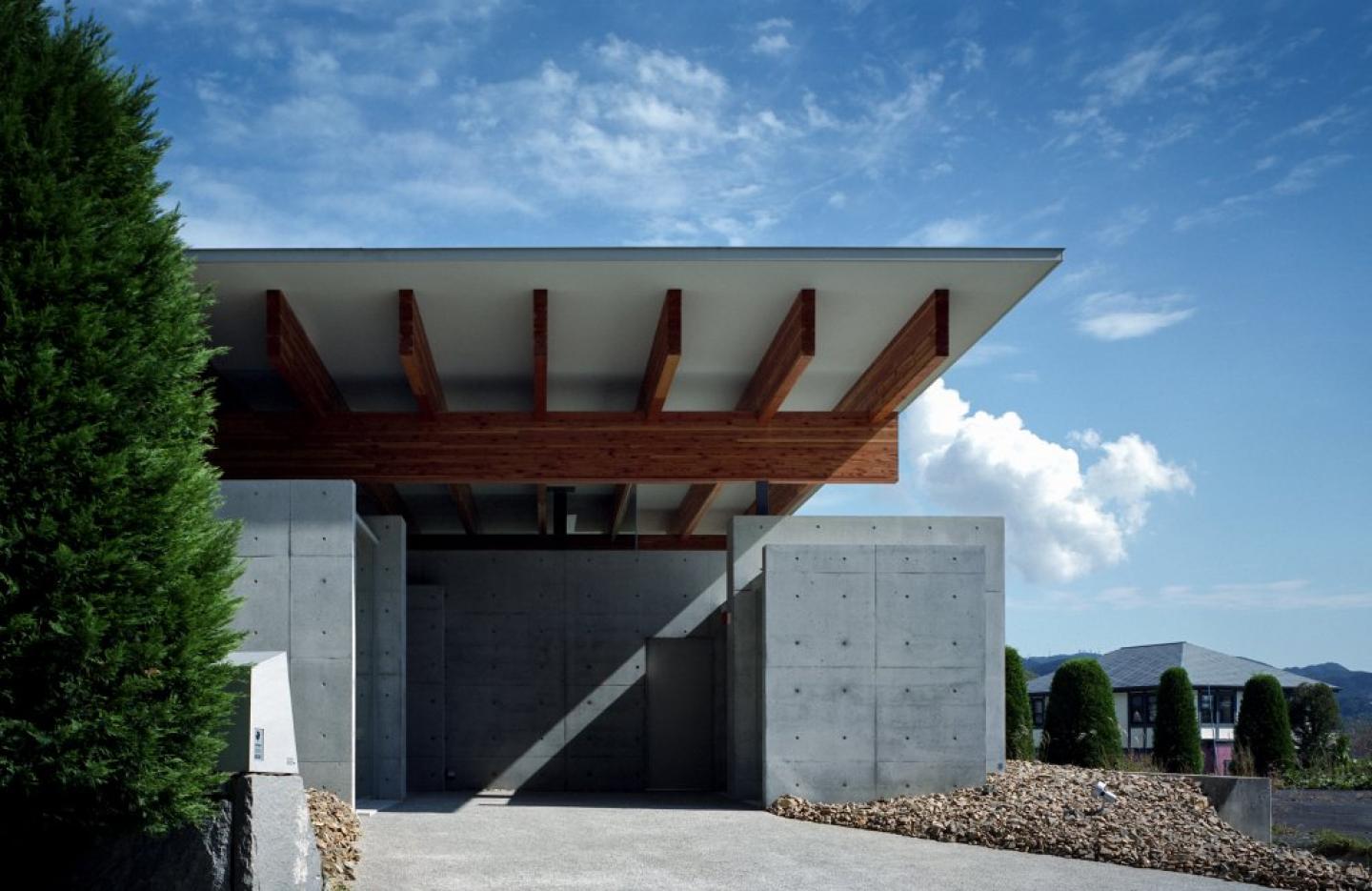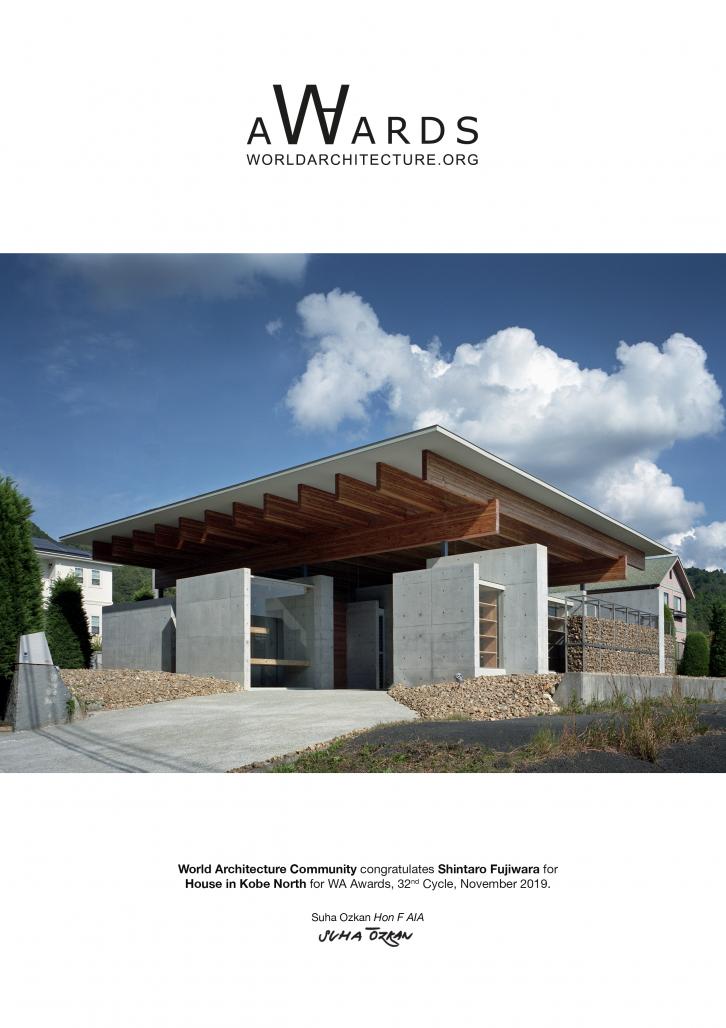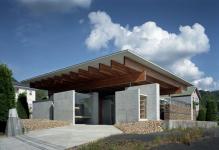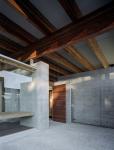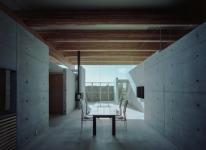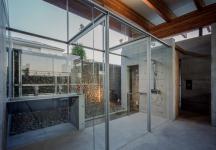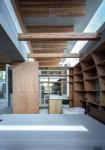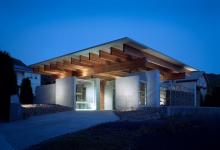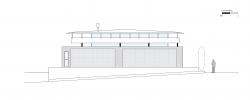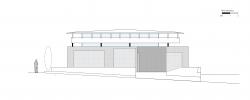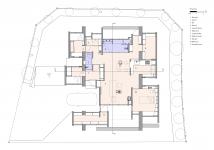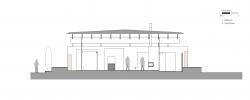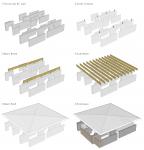The client requested a combination of large, open spaces and small, cozier spaces for relaxing, delineated by elevation differences or niches.
Because the client’s wife is disabled and uses an electric wheelchair, it was also essential to design a porous layout which enabled the residents to sense one another’s presence from any part of the house so that she could use it freely. Our concept was to link small and large spaces via ambiguous boundaries so that they could be experienced either as small or large depending on how the residents used them.
To actualize this concept, we felt it would be optimal to avoid conventional categories such as “living room” and “hallway,” and instead construct a collection of areas whose ambiguous divisions would enable them to
be interpreted as either places to spend time or circulation routes.
We began by roughly marking off the residence with a large main roof and walls.
We then used enclosures constructed from doors, windows, cabinetry, glass and wood roofs and walls, and gabions to control the transmission or obstruction of light, sound, air, movement, and lines of sight, thereby defining the living space.
These enclosures block visibility from outside but ensure visibility from inside.
They are designed to provide a sense that one is underneath the main roof no matter where in the living space one is, which leads to a reassuring feeling of being within a single large, interconnected space. At the same time, because the main roof is hoisted above the large concrete walls by exposed steel columns that reveal the sky in the gaps between roof and walls, the interior has an open, unrestricted feeling.
In order to suppress the characteristics of conventional spatial categories, we made each element of the residence as abstract as possible. This emphasized the materials that compose these elements, including concrete, steel, stainless steel, wood, plywood, glass, and stone.
We used these materials in their raw state as interior finishes.
As a result, the abstraction of the spaces and the physical presence of the materials set each other off, creating a residence that is both subdued and deeply atmospheric.
2018
2018
Project Location: kobe city, Hyogo Pref.Japan
Completion Year: 2018
Principle Use: Residence
Site Area: 134.95 sqmt
Building Area: 51.87 sqmt
Total Floor Area: 43.40 sqmt
Storey(s): 1
Structure: mix (RC + Wooden)
Shintaro Fujiwara, Yoshio Muro
House in Kobe North by Shintaro Fujiwara in Japan won the WA Award Cycle 32. Please find below the WA Award poster for this project.

Downloaded 15 times.
